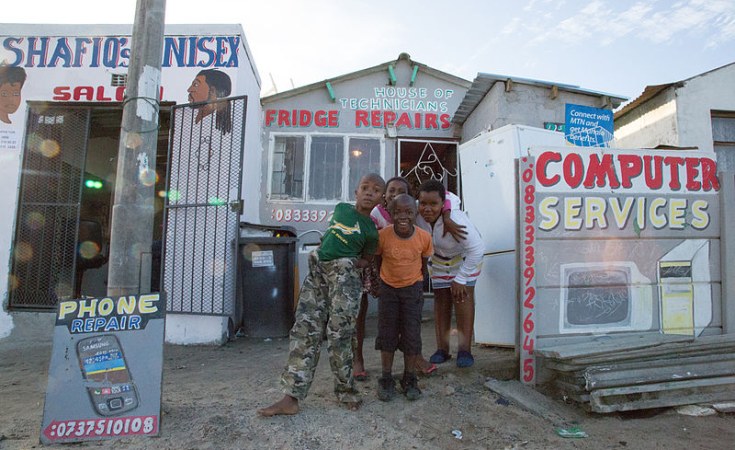It is official: With 9.3 billion mobile connections, the number of mobile devices on earth now surpasses the 7.6 billion people population. This creates huge opportunities to advance global health and food security through mobile phones. It may surprise people to learn that this can be done without apps. Here are three main ways to effectively use mobile phones to address issues like infectious diseases, particularly on the African continent.
First, mobile messaging presents the perfect platform to address global problems like infectious diseases. Already 22 billion text messages are sent daily by mobile phone users. Mobile messaging can be used to inform remote communities across Africa about immunisation, one of the most cost-effective public health interventions for prevention of infectious diseases. Mobile messaging should also be used for risk communication - informing individuals about changes they can make to prevent infectious diseases. For example, informing individuals about the benefits of hand washing, stoppage of open defecation and benefits of taking the right vaccines/drugs before embarking on international travels.
This is sorely needed as globally, more than 50% of all countries are not prepared for an epidemic, according to preventepidemics.org, the world’s first website to provide an overall score for a country’s ability to find, stop and prevent diseases. In Africa, based on preventepidemics.org rankings, no country is fully prepared for an epidemic. For instance, Nigeria, Kenya and South Africa score 39%, 50% and 62%, respectively.
In terms of agriculture and food security, messaging via cellphones has already been leveraged with much success. Tigo Kilimo, in Tanzania, for example, helps farmers stay ahead of weather by sending crucial weather data via cellphones. In Malawi and Western African Countries, Self Help Africa is using text messaging to warn thousands of citizens about impending weather events that might threaten their crops, or their homes. In addition, by combining mobile cell phone technology and artificial intelligence, cell phones can detect crop plant diseases, several days before full symptoms are evident. Once plant diseases have been detected, farmers can be messaged via cellphones, allowing them to take the necessary preventative actions.
Second, the talk feature of mobile phones can be useful for the exchange of ideas. When community dwellers come across illnesses that they do not know, how do they report such cases? Who do they report such cases to? This is where talk features of mobile phones could be harnessed. The use of toll-free lines for reporting suspected infectious disease would help health workers nip it in the bud before outbreaks occur.
This is timely as lately, we’ve seen many infectious disease outbreaks including Lassa fever in Nigeria, cholera in Kenya, African swine flu in South Africa and measles in the U.S. The latest Ebola outbreak in the Democratic Republic of the Congo (DRC) has killed more than two thousand people so far. The risk of spreading infectious diseases is heightened by the ease of international travel. Within 36 hours, an outbreak that began in a remote village can reach major world capitals. Quickly communicating with health workers about these illnesses could keep them from spreading.
Similarly, in terms of food security and agriculture, mobile phones can be tapped into to prevent invasive pests that have significant impacts on food security. Take the case of the invasive fall armyworm, a crop pest that invaded Africa in 2016, and significantly affected food security in over 46 African countries. If farmers across Africa had adequately been trained on how to use their cell phones to report unusual pests to their respective departments of agriculture, a lot of the early damage caused by this invasive pest would have been prevented.
With recent research predicting that threat from invasive pests will continue to increase within African countries, African governments and other stakeholders in the African agriculture sector must tap into mobile phones to help African farmers to anticipate and prepare for future invasive insect pests. It is encouraging to see that researchers are already implementing this. Farmers in Kenya, Ghana and Zambia can get early alerts courtesy of the Pest Risk Information Service. This should continue.
Third, data functionality of mobile phones provide good platforms for providing continuing professional development for agricultural extension and health workers and updates on new and emerging infectious diseases as well as plant diseases and insect pests. A well-educated agricultural extension and health workforce that is capable of detecting and responding to infectious diseases, invasive pests, and other epidemics and disasters linked to a changing climate can saves lives. High speed internet such as the free Google Wi-Fi Hot Spots being rolled out across Africa can be a gamechanger if national public health and agriculture institutes are connected to it. The Google hotspots speed is 30mbps, which is more speed than most African countries offer.
We must take advantage of this widespread penetration of mobile cellphone technology to advance global health security and food security on the African continent.
Dr. Esther Ngumbi is an Assistant Professor at the Entomology Department, University of Illinois at Urbana Champaign. She is a Senior Food security fellow with the Aspen Institute and has written opinion pieces for various outlets including NPR, CNN, Los Angeles Times, Aljazeera and New York Times. You can follow her on Twitter @EstherNgumbi
I am Dr. Ifeanyi M. Nsofor, a medical doctor, the CEO of EpiAFRIC and Director of Policy and Advocacy at Nigeria Health Watch. He is a 2019 Atlantic Fellow for Health Equity at George Washington University, a Senior New Voices Fellow at the Aspen Institute and a 2006 International Ford Fellow. You can follow him on Twitter @ekemma.


